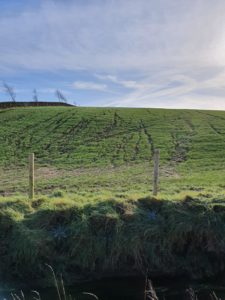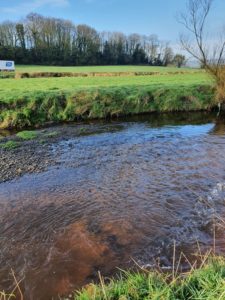January was the perfect opportunity to conduct soil sampling for my project as this coincides with the closed spreading period for agricultural fertilisation, meaning that baseline soil nutrient status could be obtained before any potentially nutrient-enriched chemical fertilisers or slurry were applied to the land. I had 4 study sites to be sampled on a 35m grid basis in order to investigate the spatial variability of soil nutrients and to identify if any potential nutrient hotspots are present within the fields.
With help from a team from AFBI, my project’s case partner, 189 sample points were taken across the 4 sites with multiple cores extracted from each point to a depth of 7.5cm using an auger. Each of these points was located in the field with the usage of a differential GPS unit (courtesy of QUB GIS lab) and can locate the gridded points, which were generated in ArcMap, to an accuracy of ±0.5m. These soil samples are currently undergoing analysis at AFBI’s facilities. With the information on the spatial variability of soil properties in-field, accurate areas can then be targeted requiring mitigation or management techniques in order to reduce the nutrient status in-field or to reduce the transportation of these nutrients into waterways and improve ecosystem functioning and water quality, a key objective of the EU Water Framework Directive.
Currently fieldwork is being planned for February for bank sampling along the river networks at each of my 4 field sites in order to assess and quantify the potential risk of waterway nutrient enrichment from bank erosion, particularly for areas whereby direct livestock access or cattle poaching enhances this risk. High resolution drone imagery flights in conjunction with the QUB GIS lab are also going to be conducted at each site in order to give detailed elevation and LiDAR data to be incorporated into soil erosion models investigating the changing effects of land use and climate change upon soil erosion.
A regime for hydrological and biological monitoring techniques, potentially incorporating aspects of auto-samplers, time integrated sediment samplers, macroinvertebrate and diatom analyses are also being discussed in order to monitor aspects of water quality from both a chemical and a biological sense.























































